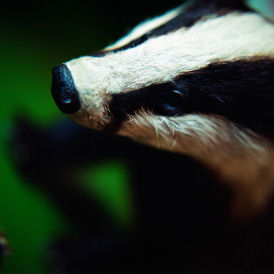Badger cull green-lit in bid to beat bovine TB
The Government has green-lit a cull of badgers to tackle rising TB rates in cattle. Channel 4 News has spoken to a farmer and a conservationist about whether culling is the best approach.

Caroline Spelman, the Environment Secretary, acknowledged there was “great strength of feeling” about the issue but told the Commons: “I believe this is the right way forward.”
The go-ahead comes after a key Government adviser on badgers and TB last week said he believed culling the wild animals could be a mistake.
Lord Krebs, who conducted a review on the issue in the 1990s, said he did not think culling was an “effective policy”.
The decision is subject to further discussions on exactly how it can be carried out, with ministers expected to consult with farmers, wildlife groups, vets and animal welfare charities on revising the guidance to Government agency Natural England to set down the conditions under which it can give out licences for a cull.
The cull would need to be carried out over four years, over a six-week period each year, and with a “closed season” during the winter and spring to prevent orphaned badger cubs being left to starve in setts, or caged badgers suffering from the cold before they are shot.
Divisive issue
The mass slaughter of badgers, which carry TB, is a divisive issue which has split farmers, animal welfare campaigners, scientists and the wider public for years.
Farmers say the badgers must be culled to stop them spreading the disease to livestock. But welfare groups believe the cull is both cruel and an ineffective way of dealing with TB in dairy and beef cows.
Environment Secretary Caroline Spelman will address the House of Commons later in response to a consultation on badger control.
‘An emotional and financial burden’
Jan Rowe is a farmer from Whittington, near Cheltenham, whose 180 cattle have TB.
He told Channel 4 News that the disease had been a huge financial and emotional burden over the past 25 years: “We’ve had to adjust our whole farming enterprise to live with TB but it still causes us enormous problems.
“One of the biggest is the sheer uncertainty. You never know from one test to the next whether you can trade animals, how many you’re going to lose. It’s a very, very wasteful disease.”
Jan reluctantly supports the cull. “We don’t want to kill badgers at all. It’s just a question of needing to control TB – and the biggest reservoir of TB in certain parts of the country is in the badger population.”
His views are shared by the current Chief Scientist and Chief Vet in the UK, who have concluded that co-ordinated and sustained culling of badgers will reduce TB rates in cattle. They say data shows that new TB infections in cattle herds fell by 16 per cent after a badger cull.
‘The science is not clear’
Wildlife campaigners say a badger cull is not the most effective way to deal with TB in cattle.
Gordon McGlone is chief executive of Gloucestershire Wildlife Trust and says badgers should be vaccinated rather than killed.
“What we’re doing is using is a proven technique. The badger is unharmed, and what we hope is that after five years all the badgers on our nature reserves will be immune to bovine TB.”
Gordon says the fact that, at best, TB infections in cattle are only likely to fall by 15 per cent shows a cull is not the best way forward.
“It will involve the killing of very large numbers of animals, it will have to happen over a long period and be done incredibly effectively, there will be no benefits for the first two years – and even then it will not deal with the bulk of the problem.”